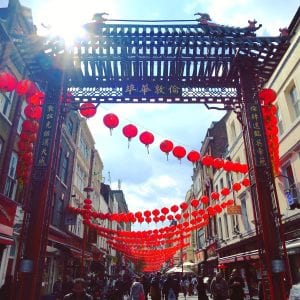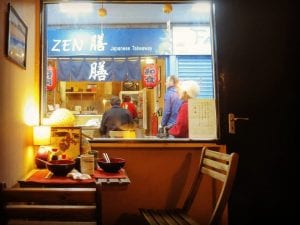Radically changing food habits with new undergraduate course
By ucyow3c, on 10 June 2017
Written by Francis Lecomber, student on UCL BASc2096
 How can we change our relationship to food? That’s been the central question for the new UCL Arts and Sciences BASc course “Citizen Science for Radical Change: Co-design, Art and Community” (BASC2096), which ran for the first-time last term. At a pop-up exhibition this week, selected students from the course showcased final projects exploring the factors that affect our decisions over what to eat.
How can we change our relationship to food? That’s been the central question for the new UCL Arts and Sciences BASc course “Citizen Science for Radical Change: Co-design, Art and Community” (BASC2096), which ran for the first-time last term. At a pop-up exhibition this week, selected students from the course showcased final projects exploring the factors that affect our decisions over what to eat.
The course brought together multiple disciplines to explore food, based on an open source interdisciplinary method developed by our lecturer Kat Austen for her project Vital. Incorporating elements of chemistry, citizen science, community co-design and philosophy, the course encouraged students to think both analytically and creatively in their approach to learning, whilst embracing the overarching theme of food as a unifier of different peoples. The learning process itself is studied throughout the course, as we were encouraged to investigate the many different forms of knowledge and the hierarchical structure in which they exist – a structure that often places quantified data far above sensory perception in terms of value. This overarching theme continuously shaped and changed our approach to knowledge acquisition.
Throughout the course, we worked with students from Newham’s NewVIc Sixth Form College, where we ran workshops and scientific experiments. At the end of the term, we co-designed exhibits and performances with the NewVIc pupils, which helped inform our personal designs for our final projects.
In these final projects, the diverse threads of the course are woven into a major design piece. These designs were exhibited here, at the UCL Art Museum, on Monday 5th June as a part of the university’s theme of Transformative Technologies. In their diversity, they capture the multiple meanings food has to us, and the effect of engaging with it in an interdisciplinary way.
First, we encounter a sound work, A Journey Home by Dave Tunstall. In addition to studying chemistry, Dave is also a musician. Inspired by the fact that taste can be a journey, and that food and our emotions are intertwined, Dave drew on his musical experience to create this moving ambient soundscape, steered by a percussive rhythm that rises and falls as it charts a personal journey through a food experience.
Listen to Dave’s soundscape here .
 My own project utilizes digital technology in the form of a website to launch a group-based initiative focussing on the concept of the loss of traditional knowledge in global communities. With Relearning Initiative, I hope to kick-start an appreciation for traditional approaches to knowledge transfer, acquisition and use, and encourage people to move away from convenience and toward more mindful ways of living. An ongoing work; after graduation, I plan to continue developing the project into a thriving community of contributors, working together to restore knowledge often forgotten to the convenience of contemporary consumer culture.
My own project utilizes digital technology in the form of a website to launch a group-based initiative focussing on the concept of the loss of traditional knowledge in global communities. With Relearning Initiative, I hope to kick-start an appreciation for traditional approaches to knowledge transfer, acquisition and use, and encourage people to move away from convenience and toward more mindful ways of living. An ongoing work; after graduation, I plan to continue developing the project into a thriving community of contributors, working together to restore knowledge often forgotten to the convenience of contemporary consumer culture.
 One of the most surprising perspectives we learned during the course is the idea of objects having agency – that is, that objects affect how we make decisions regarding food. Inspired by this idea, and by the effect of delivering and participating in workshops during the course, Momoko Okuyama’s project is a design for a Food and Object Agency Workshop. Bringing together elements from across the course, she has produced an experience where participants can come to re-evaluate their relationship with food and related objects. Presented at the exhibition in poster form, her workshop encourages participants to focus on habits and sensations that go unnoticed in everyday life through use of forum theatre and interactive activities. The process is designed to heighten the sensitivity towards the act of eating; one of our most fundamental behaviours. By acknowledging the power that technology has over our choices, it becomes possible to shape its development – with the human user as its priority.
One of the most surprising perspectives we learned during the course is the idea of objects having agency – that is, that objects affect how we make decisions regarding food. Inspired by this idea, and by the effect of delivering and participating in workshops during the course, Momoko Okuyama’s project is a design for a Food and Object Agency Workshop. Bringing together elements from across the course, she has produced an experience where participants can come to re-evaluate their relationship with food and related objects. Presented at the exhibition in poster form, her workshop encourages participants to focus on habits and sensations that go unnoticed in everyday life through use of forum theatre and interactive activities. The process is designed to heighten the sensitivity towards the act of eating; one of our most fundamental behaviours. By acknowledging the power that technology has over our choices, it becomes possible to shape its development – with the human user as its priority.
Tz-Ching Tai’s project, The Chinese Red, focusses on much larger systems. This photojournalistic tour comprises striking images of the trans-nationalisation and globalisation of food, in the context of our societies. Her photographs explore the geographically changing environments in which food is consumed. For example, food that is culturally native to geographically Eastern countries can now be readily experienced in the West. Does the environment in which a particular food is consumed change the way in which it is experienced? And does it change the food itself?
 Citizen Science for Radical Change: Co-design, Art and Community has been a transformative process for many of the students involved. The course has enabled those from arts-based departments to think analytically, whilst simultaneously giving science students room to express their creativity. The convergence of these learning experiences in the final project phase culminate in the cultivation of a holistic, inclusive design approach. In a world where interdisciplinarity is predicted to be the principle future driving force for social and economic change, its methodology may prove to be invaluable for those involved.
Citizen Science for Radical Change: Co-design, Art and Community has been a transformative process for many of the students involved. The course has enabled those from arts-based departments to think analytically, whilst simultaneously giving science students room to express their creativity. The convergence of these learning experiences in the final project phase culminate in the cultivation of a holistic, inclusive design approach. In a world where interdisciplinarity is predicted to be the principle future driving force for social and economic change, its methodology may prove to be invaluable for those involved.
 Close
Close

